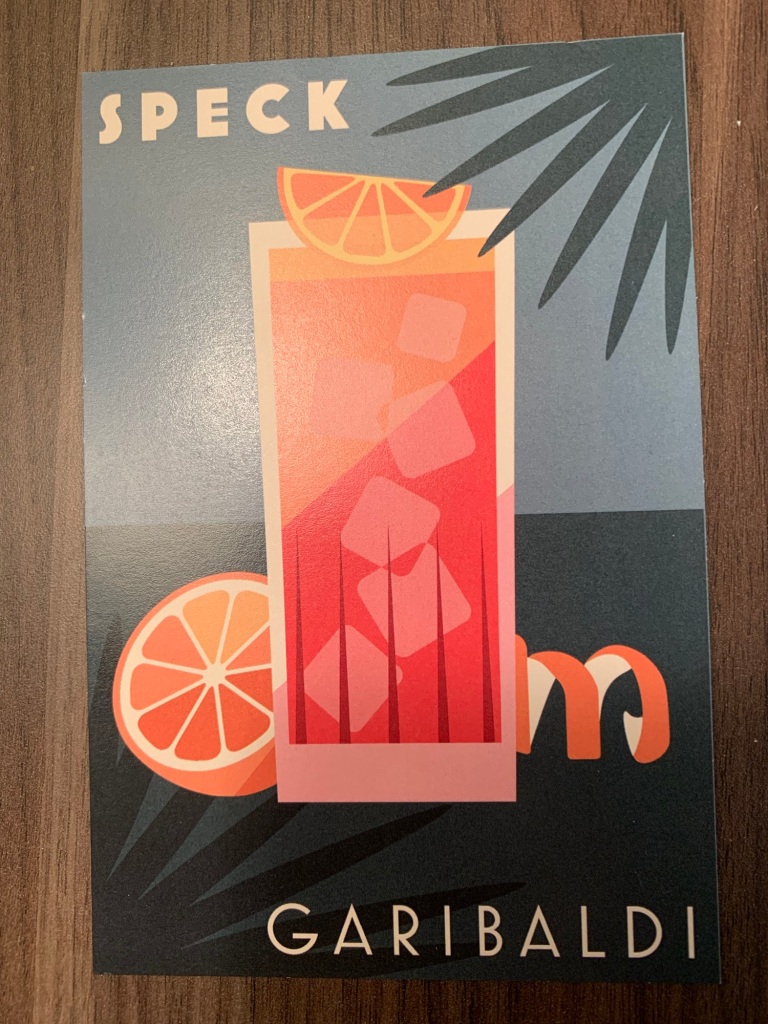
When we have gone out to eat recently, I’ve been struck by the changes in the menus–and specifically, the increased attention to the cocktail section. At many of the nicer restaurants in town, the menus are giving more and more space to the description of new drink concoctions to tantalize patrons, as well as offering the tried-and-true options. One of our favorite restaurants, Speck, accentuates the enhanced cocktail focus by handing our postcards with stylized depictions of cocktails like the one above.
(A Garibaldi, in case you’re interested, is made with Campari and orange juice, and looks like it would be a very refreshing warm weather drink.)
Why has this apparent increased focus on offering, and consuming, cocktails happened? I wouldn’t draw too many sweeping conclusions from it. I think drinking habits tend to be cyclical. Cocktails had their heyday in the Roaring Twenties, when many of the classic combinations were created, and have periodically waxed and waned in popularity in alternation with wine, beer, and “neat” drinks in the decades since. Now that we’re back in the ’20s again, cocktails are taking their turn.
This cocktail era–which you might call the second golden age of cocktails–is different from past cocktail-consuming eras due to the willingness of inventive bartenders to experiment with different ingredients, obscure liquors, and elaborate combinations. We recently went to a place where the menu featured one drink made with brown mustard. That’s not something you’d have seen the Rat Pack guzzling. The menus carefully describe all of the ingredients, too–which increases the urge to try something new, just to see how it tastes.
I think the increased focus on developing new cocktails is pretty cool, and the sight of diners sipping from the distinctive glasses they are inevitably served in gives a very cosmopolitan flair to dining out. This must be a fun time to be a bartender, because it certainly is a fun time to be an adventurous drinker.
